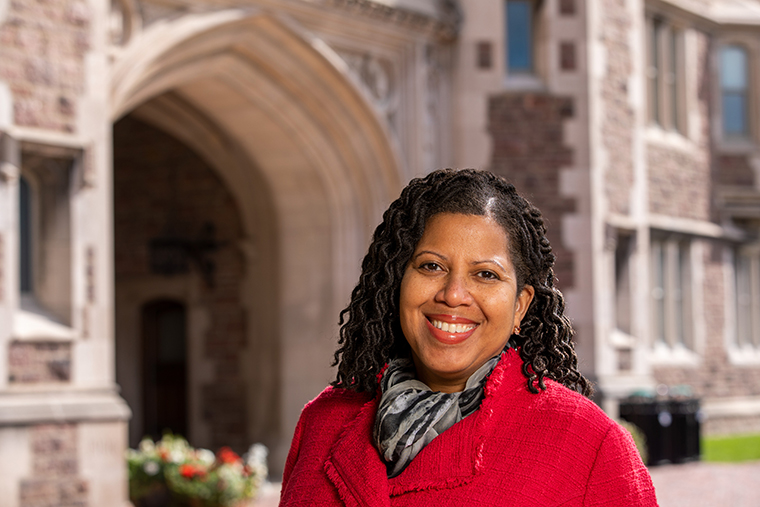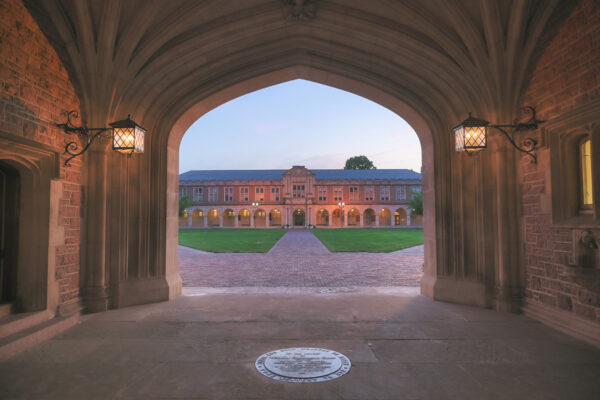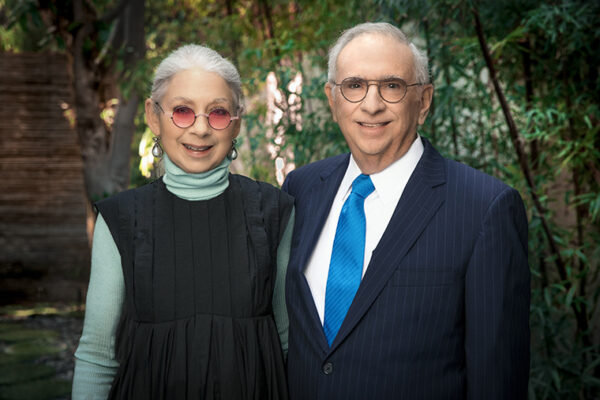Grades. Co-curricular activities. Personal essays and videos.
These are some of the factors that admissions officers at Washington University in St. Louis are continuing to evaluate as they build the Class of 2026.
No longer on that list: family income.
Earlier this month, Chancellor Andrew D. Martin announced the university had adopted a need-blind admissions policy and Gateway to Success, a $1 billion investment in financial aid. And that thrilled Ronné Turner, vice provost for admissions and financial aid.
“It’s incredible that students can now apply here based on their merit and the work they have done, and we can provide them the financial aid and resources they need to enroll and thrive at WashU,” Turner said. “Admitting talented students regardless of their family’s financial background is just the right thing to do.”
The Office of Admissions also no longer weighs demonstrated interest in the admissions process and has adjusted its determination of aid so that financial aid packages are more competitive with peer institutions.
“All of this together makes us much more accessible to students from a diversity of socioeconomic backgrounds, students who are going to make an impact on our community and the world,” Turner said.
Here, Turner shares how the Office of Undergraduate Admissions will administer the university’s need-blind policy, why it has done away with demonstrated interest and what’s next for standardized testing.
How did the admissions process work before adoption of the need-blind policy?
There was a point in our process where we considered students who applied for financial aid separately. Every single application is read, evaluated and rated. Students who had financial need were considered together. Once we exhausted the financial aid budget, we were unable to admit additional students who had financial need. We’re fortunate to have a really strong applicant pool and have a lot of students to choose from, but often there were compelling students who needed financial aid we just couldn’t admit. And that was sad and frustrating to our team.
Washington University has made big gains in admitting Pell grant-eligible students, rising from 8% in 2015 to 17% today. But one consequence has been a decrease in middle-income students. Will the need-blind policy impact that trend?
As a need-aware institution, we focused our financial aid on students who fell into categories that are a priority to the university such as first-generation students, Pell-eligible students and students who qualify for the WashU Pledge. That has created a barbell effect where we have a group of students who can afford to pay the full cost of WashU and a group of students whose families are not as well resourced. We were not able to admit many students from moderate-income families given financial aid limitations.
And that is an issue because there are really talented students from moderate-income families. They’ve been told, “Get good grades and you can go to the best colleges.” But in reality, financial aid is not always available. And while there are great public colleges and universities, what does it say about our country if all moderate-income students are going to public or lower-cost institutions? There are brilliant moderate-income students and we want that brilliance here at WashU.
How do you anticipate need-blind admission will change the makeup of the Class of 2026?
We believe our new policy will attract more applicants from diverse backgrounds and, in turn, that the Class of 2026 will be more diverse. The goal is to enroll a greater percentage of students receiving financial aid from both low and moderate incomes, a greater percentage of first-generation students as well as more underrepresented students of color. Of course, that’s if these students choose to apply. My team and I are doing everything we can to encourage applications.
Another big change is that WashU will no longer consider demonstrated interest such as visiting campus or attending a virtual event. Why?
We absolutely want students to genuinely explore Washington University, whether that means participating in a virtual tour or interview or visiting campus. But we know that demonstrated interest puts students from rural communities, first-generation families and high schools with low college-going rates at a disadvantage because they are often unaware how demonstrated interest can factor into the admissions process. We also know from school counselors who serve students who come from more privileged backgrounds that the policy contributes to stress and, sometimes, the gaming of the college admissions process. You’ll have a student attending 12 webinars — not even paying attention, just logging on — to show interest.
Some critics argue that schools like Washington University would better serve lower-income students if they changed the early admission process, which offers applicants better odds of admission but locks them in to attending.
Our data show a diversity of students apply through our early programs. That’s not an accident. When we decided to add Early Decision II, we worked hard to make sure students from under-resourced backgrounds knew about the opportunities at WashU and had a chance to meet with our counselors to get an early read of their potential financial aid package. There are certainly families who need to see their financial aid awards from a number of institutions before they finalize that decision. And we support that. But early decision is an important tool to help us enroll talented students who really feel that WashU is a strong fit.
WashU will again be test-optional because of the ongoing COVID pandemic, but the long-term future of standardized testing is a hot-button topic. What is your opinion?
In my view, testing is not the enemy. Part of the problem is the way we finance pre-K through 12 education. Students in under-resourced communities do not have the same educational opportunities as students from more well-resourced areas. That impacts learning.
College admissions professionals are professionals. I’ve been doing this work for some 35 years, and at every institution where I have worked, we have always used testing within context. When you work at an institution that is selective and does holistic admission, a test score is used to understand a student and their background and their opportunities. It is just one factor.
We have research that suggests that testing helps us to predict who is going to be successful in their first year here at WashU. And we’ve used testing for those reasons, particularly in the STEM majors. We also know that, because of our current test-optional policy, we had more students from diverse backgrounds apply to WashU last year. That signals to me that the test-optional policy makes WashU more accessible. We will carefully monitor trends in the applicant pool and student success data before recommending whether the university should continue the test-optional policy beyond this year.



